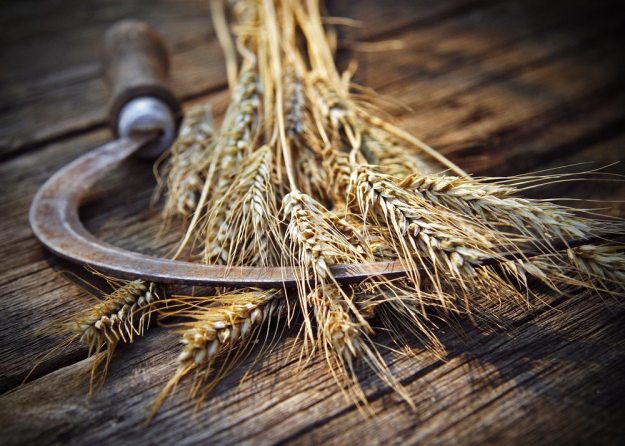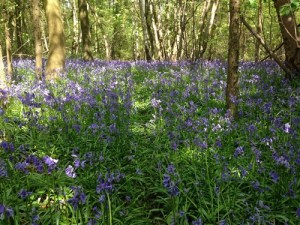Sermon preached on the Second Sunday Before Lent based on the following passages – John 1:1-14 and Colossians 1:15-20
May I speak and may you hear through the Grace of our Lord; Father, Son and Holy Spirit. Amen
In the beginning was the Word… perhaps one of the most evocative starts to a gospel or indeed any scripture, where we are presented by a mystery. Of course, one would expect nothing less of John and whilst all four gospels can be said to be biographies of Jesus, as the former Archbishop of Canterbury William Temple once said, ‘the Synoptic Gospels [i.e. Matthew, Mark and Luke] are like photo albums, whilst John’s gospel is like a portrait’, and a portrait is something we can spend many hours standing in front of to try and gauge what the artist is trying to tell us.
In the beginning was the Word… John’s opening sentence echoes the opening words of the book of Genesis which firmly places the Word in creation, communicating God’s will and evidence that it is eternal and has always been at work throughout.
With its capital ‘W’ we can see that it is a title not a noun or a verb, and John identifies the Word as God in the person of Jesus; and although the term Word or the Greek Logos is not retained as a title in John’s Gospel beyond the prologue, the whole gospel presses the basic claim that the Father, the Son, and the Holy Spirit together are one God. Here is God present to his people and knowable to his people in self-revelation and redemption.
Accordingly, Jesus is the source of life and light for all people everywhere; but what of that light? God had sent an advance messenger in John the Baptist to provide testimony as to the true light. A light that will enlighten, educate and clarify God’s purpose in wanting to redeem all who will believe in him. A light that will dispel the darkness and evil that shrouds the world in so many places.
Certainly, over the last year we have seen a lot of darkness in the world; darkness that is more like an invisible fog that clings to bodies and minds. Yet the one thing that has kept many people going is a sense of faith that there is hope for the future. In amongst all that darkness a small flicker of hope has burned steadily, ‘and the darkness did not overcome it’.
The light shines in the darkness, and the darkness did not overcome it
John 1:5
And today, more than ever that small flame is burning even more brightly as we appear to be at a turning point in the Coronavirus pandemic, with the vaccine programme rollout and lockdown measures reducing the rate of infection. Yet, we can’t reduce God’s role to that of a single unextinguishable tealight!
However, the light is indeed eternal, and as mentioned, is a light that will enlighten people everywhere. It is a spiritual light, that awakens a response to the person of Jesus, but it is also a light that kindles in our heart and minds the knowledge and skills needed to bring light to others.
In flashes of inspiration or eureka moments – from Archimedes in his bath; Newton under his apple tree and the scientists at AstraZeneca in their test tubes, to the light that shines out from people’s eyes in simple acts of kindness and love done purely for the benefit of others.
There is nothing that can stop this light from shining and yet people still choose, just as Jesus’ own people did, to turn away, to shield their eyes and fail to recognise God even when he walks among them.
And walk among them he did, which was quite extraordinary, that the Word of God, the agent of creation, should choose to become ‘flesh’, to become a human being, taking on our nature, with all its wayward appetites and frailties. But just like then, his death could not extinguish the light, and those who believe in him, whether then or now, all creatures of the original creation find themselves transformed through his blood on the cross into a new spiritual creation, as children of God, in which the light of Christ resides.
This then is the light that we all have within us as followers of Christ. Even so, for many people there have been times when the surrounding darkness has threatened to overwhelm us, unable to fully imagine the number of deaths related to the Coronavirus, the mental anguish of being parted from loved ones, the exhaustion, the rules, the sheer inescapable nature of the way we are having to live our lives; it all takes its toll.
Yet, the light still shines deep within us. slow and steady – we just have to allow it push away some of that darkness, to hand over our worries and concerns to God, to let him reveal the signs of hope and new life for each of us, just as he revealed his glory in the life of Jesus.
A ‘glory’ not as a radiant vision or dazzling light but in his sacrificial love for the world that revealed his true worth. Centuries before, Moses realised that God ‘is compassionate and gracious… abounding in love and faithfulness’ but it is God’s Son who is ‘full of grace and truth’. And it is through this Grace that the invisible God is never truly hidden but is always revealed in the perfect light of his son, Jesus Christ, the light for and of the whole world, now and forever. Amen





















